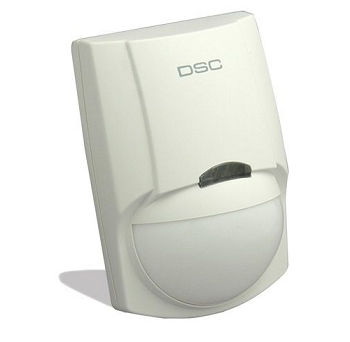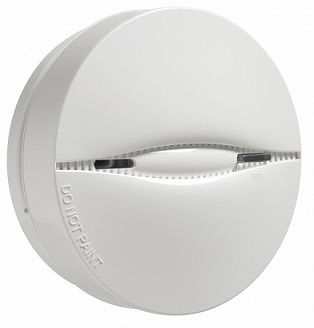
Control Panel
A burglar alarm is a security system that is designed to detect unauthorized entry into a building or area. It typically consists of a series of sensors, such as motion detectors or door and window sensors, that are connected to a control panel. When the sensors detect movement or a door or window is opened,
The control panel sounds an alarm to alert the occupants of the building and potentially deter the intruder. Some burglar alarms also have the ability to send a signal to a monitoring service or to the police, so that authorities can be alerted and respond to the intrusion. Burglar alarms can be used in both residential and commercial settings to protect against burglaries and other types of unauthorized entry.
— Name, Title
Motion sensor
An alarm motion sensor is a device that detects movement within a certain area and sends a signal to an alarm system to trigger an alarm. These sensors are often used in security systems to protect homes and businesses from intrusions.
They can be placed on walls, doors, or windows, and use a variety of technologies to detect movement, such as passive infrared (PIR), ultrasonic, or microwave. Some alarm motion sensors are also equipped with additional features, such as the ability to differentiate between people and pets, or to send notifications to a smartphone or other device when movement is detected.
— Name, Title


Shock Sensor
— Name, Title
Shock sensors are often used in security systems to detect tampering or attempted break-ins.
Shock sensors can be mounted on a door, window, or other part of a building.When the sensor detects a sudden change in acceleration or movement, it sends a signal to the security system, which can trigger an alarm or alert the owner or monitoring service.
Shock sensors are a useful addition to any security system, as they can detect attempts to break into a building or vehicle or tampering with sensitive equipment. They can also be used to monitor the handling of goods during shipping or storage to ensure they are not damaged or mishandled. Shock sensors are typically small and compact, and can be easily installed in a variety of locations.
Wired Door Sensor
— Name, Title
A wired door sensor is a device that is installed on a door and is connected to an alarm system or home automation system through a wired connection. The door sensor consists of two parts: a magnetic contact and a magnet. The magnetic contact is installed on the door frame and the magnet is installed on the door. When the door is closed, the magnet is in close proximity to the magnetic contact, and the door sensor is in the "closed" state.
When the door is opened, the magnet moves away from the magnetic contact, and the door sensor is in the "open" state.Wired door sensors are typically used to detect when a door has been opened or closed, and to trigger an alarm or other response when this happens. They can be used to enhance security by alerting the homeowner or security system when a door is opened unexpectedly, or to automate tasks such as turning on lights or adjusting the thermostat when a door is opened.


Wireless Door Sensor
— Name, Title
A wireless door sensor is a device that is used to detect the opening or closing of a door. These sensors use wireless technology to transmit a signal to a receiver, which can then trigger an alarm or other type of notification. They are often used as part of a home security system.
Wireless door sensors typically consist of two parts: a sensor and a receiver.
The sensor is mounted on the door or door frame, and it sends a wireless signal to the receiver when the door is opened or closed. The receiver is typically connected to a control panel or other device that can process the signal and take appropriate action.
Wireless door sensors can be battery-powered or hardwired, Some wireless door sensors are designed to work with smart home systems, allowing you to control and monitor them using a smartphone app or voice commands.
Wireless Smoke Detector
— Name, Title
A wireless smoke detector is a device that is used to detect the presence of smoke in a building or other enclosed space. These detectors use wireless technology to transmit a signal to a receiver or control panel, which can then trigger an alarm or other type of notification. Wireless smoke detectors are often used as part of a home security or fire safety system, but they can also be used in other applications such as commercial buildings or warehouses.
Wireless smoke detectors typically consist of a sensor and a transmitter. The sensor is designed to detect the presence of smoke, and it sends a wireless signal to the transmitter when it detects smoke. The transmitter is typically connected to a control panel or other device that can process the signal and take appropriate action.


Wireless Curtain PIR Motion Detector
— Name, Title
Wireless curtain PIR (passive infrared) motion detectors are sensors that use infrared technology to detect movement within a defined area. These devices are commonly used to trigger alarms, turn on lights, or activate other security systems in response to movement. They are typically installed near windows or doors and are often used in conjunction with other security measures, such as cameras or door and window sensors.
Wireless curtain PIR motion detectors work by using a sensor to detect changes in the infrared energy emitted by objects within the detection area. When movement is detected, the device sends a signal to the control panel or other connected device, which can then trigger an alarm or perform some other action.
Wireless curtain PIR motion detectors are typically battery-powered and can be easily installed without the need for hardwired connections. They are also relatively inexpensive and can be used in a variety of settings, including homes, businesses, and public buildings.
It's important to note that PIR motion detectors can sometimes be triggered by pets or other objects moving within the detection area, so it's a good idea to adjust the sensitivity of the device or choose a model with adjustable sensitivity to reduce false alarms.
Wireless Glass break Detector
— Name, Title
A wireless glass break sensor is a type of security device that is used to detect the sound of breaking glass. These sensors are typically mounted on a wall or ceiling and use a microphone to listen for the specific frequency of sound that is produced when glass is shattered.
When the sensor detects the sound of breaking glass, it sends a signal to the control panel or other connected device, which can then trigger an alarm or perform some other action.
Glass break sensors are often used in conjunction with other security measures, such as motion detectors or cameras, to provide a comprehensive security system for a home or business.
Wireless glass break sensors are typically battery-powered and can be easily installed without the need for hardwired connections. They are also relatively inexpensive and can be used in a variety of settings, including homes, businesses, and public buildings.


Wireless CO2 Detector
— Name, Title
